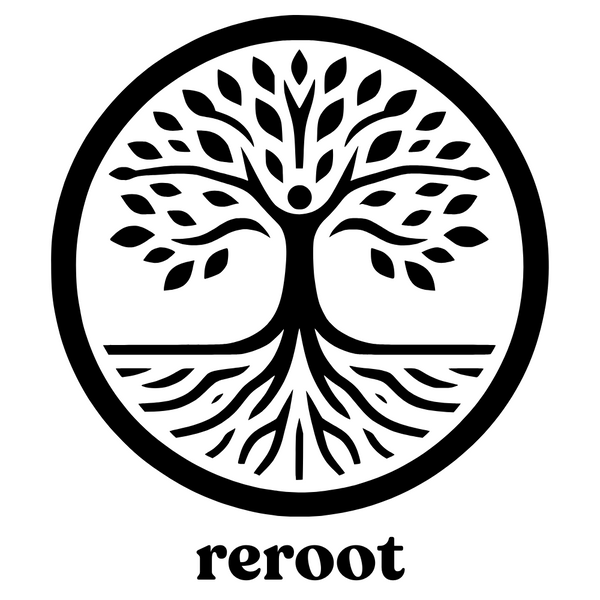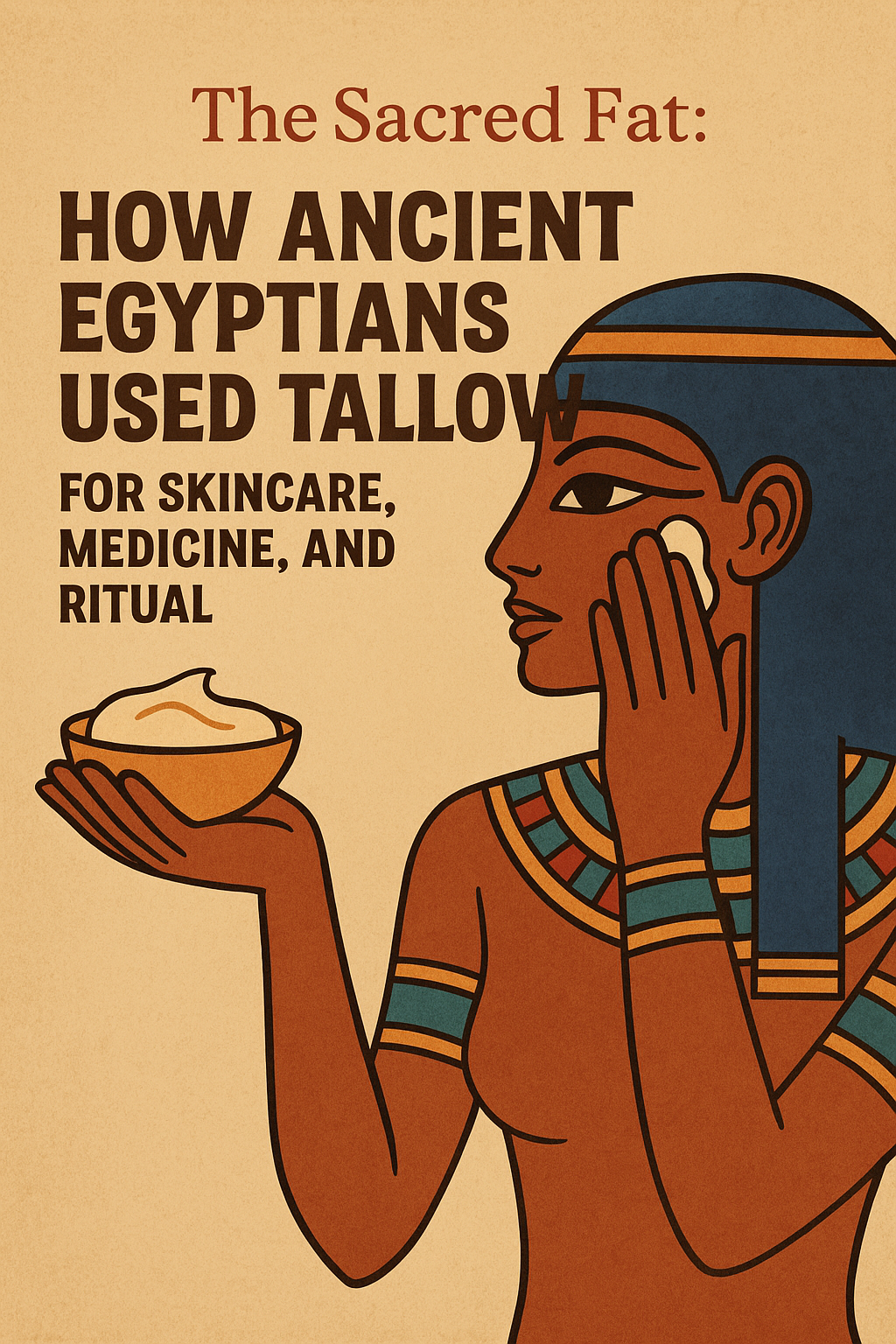In a world long before synthetic serums and lab-made lotions, the Ancient Egyptians carved out one of the most advanced skincare and hygiene systems of the ancient world — and at the heart of many of their preparations was a humble yet powerful ingredient: tallow, the rendered fat of animals.
Tallow wasn’t just for soft skin — it was a foundational, multi-use substance woven into daily life, spiritual rituals, medical care, and even early innovations like lighting and soap-making.
1. Daily Skincare in the Land of the Sun
The Egyptian climate was relentless — arid, hot, dusty. For people constantly exposed to the elements, skin protection was essential. Tallow was used as an emollient to:
-
Moisturize sun-drenched skin
-
Soothe burns and rashes
-
Create a protective barrier against wind and sand
-
Heal cracked hands and feet, especially for laborers and farmers
Many common folk would mix tallow with local herbs, crushed lotus flowers, or essential oils (like myrrh and frankincense) to enhance its scent and healing properties. Archeologists have uncovered cosmetic jars and ointment vessels in tombs that contained fats believed to be tallow-based, indicating it wasn’t just functional — it was revered.
2. Tallow in Medicine: A Healing Salve
The Ebers Papyrus — one of the oldest medical texts in existence (circa 1550 BCE) — outlines a multitude of ointments and medicinal balms. Many of these included animal fat as a base, likely tallow, because of its ability to carry herbal infusions deep into the skin and preserve them.
Used by physicians and midwives alike, tallow was applied:
-
As a wound dressing with antiseptic herbs
-
To reduce inflammation and swelling
-
In burn ointments, especially after sun exposure
-
As a base for insect repellents or fungal treatments
Its saturated fat content not only helped retain moisture but also improved the shelf life of natural ingredients in a pre-refrigeration world.
3. Spiritual and Ritual Use of Tallow
In a society where death and the afterlife were just as real as daily life, ritual purity and preservation of the body were critical. Tallow found its way into spiritual practices in a few powerful ways:
-
Embalming & Anointing the Dead: While resinous oils like cedarwood played a key role, tallow was often used to soften the body or act as a base for sacred perfumes and balms.
-
Temple Ceremonies: Priests would purify themselves with anointing oils that may have included tallow blended with sacred resins.
-
Protective Charms & Salves: Applied to ward off evil spirits or disease, these often included animal fats combined with ritual herbs.
The Egyptians didn’t separate skincare from spirituality — glowing, healthy skin was a sign of balance between the physical and spiritual self.
4. Everyday Innovation: Tallow in Soap and Light
Beyond skincare and ritual, tallow was an essential utility item in early Egyptian households:
-
🧼 Soap-Making: Egyptians mixed animal fats like tallow with alkaline salts (e.g., natron) to create early soap-like substances. These were used for personal cleansing and medicinal purposes — long before modern soap ever bubbled up.
-
🕯️ Lighting the Way: Tallow was also used in the production of rudimentary candles or “rushlights,” where fat-soaked reeds served as primitive lamps. These lit homes and temples alike and were essential for nighttime rituals and navigation in the dark.
This dual role of tallow — as both cleanser and illuminator — speaks to its broad utility in ancient life, showing that fat was far from waste; it was treasure.
5. Who Used Tallow? The Pharaohs... and the Farmers
While royalty like Cleopatra may have bathed in donkey milk and worn gold face masks, even the lower classes accessed animal fat for daily use. Cattle were central to Egyptian life — for farming, ritual sacrifice, and sustenance. Rendering fat into tallow was a practical byproduct of butchering, making it an accessible and invaluable commodity for all walks of life.
Fun fact? Tallow-based balms were often sealed in alabaster jars and placed in tombs — ensuring the dead would be moisturized for eternity.
6. A Lost Art — Revived by reroot
Today’s skincare industry has traded in ancestral wisdom for industrial chemistry — but at reroot, we’re putting the sacred fat back on its pedestal. Our Naked Tallow Balm and Tallow Honey Balm honor the same principles used by the ancients:
-
Pure, rendered animal fat from grass-fed, grass-finished cattle
-
No fillers, no preservatives, no lab-made mystery goo
-
Skin nourishment that works in harmony with your biology
We aren’t just making skincare — we’re rerooting you to something eternal.
Conclusion: Ancient Skin, Eternal Wisdom
In Ancient Egypt, beauty, health, and utility weren’t separate from the earth — they were born from it. Tallow was a cornerstone of that truth: a natural, effective, and sacred ingredient used to protect, heal, cleanse, and illuminate.
In embracing tallow today, we aren’t just moisturizing — we’re rekindling a relationship with ancient, time-tested care. One jar at a time, we’re rerooting skincare in truth, simplicity, and ancestral brilliance.
Want to glow like the gods and light up like the ancients? Try our ancestral balms and reroot your routine.
#AncientEgypt #TallowTradition #SacredSkin #reroot #SkincareWithHistory #AncestralGlow #HealingFat #TallowWisdom #TallowSoap #NaturalLighting #RerootedRituals

